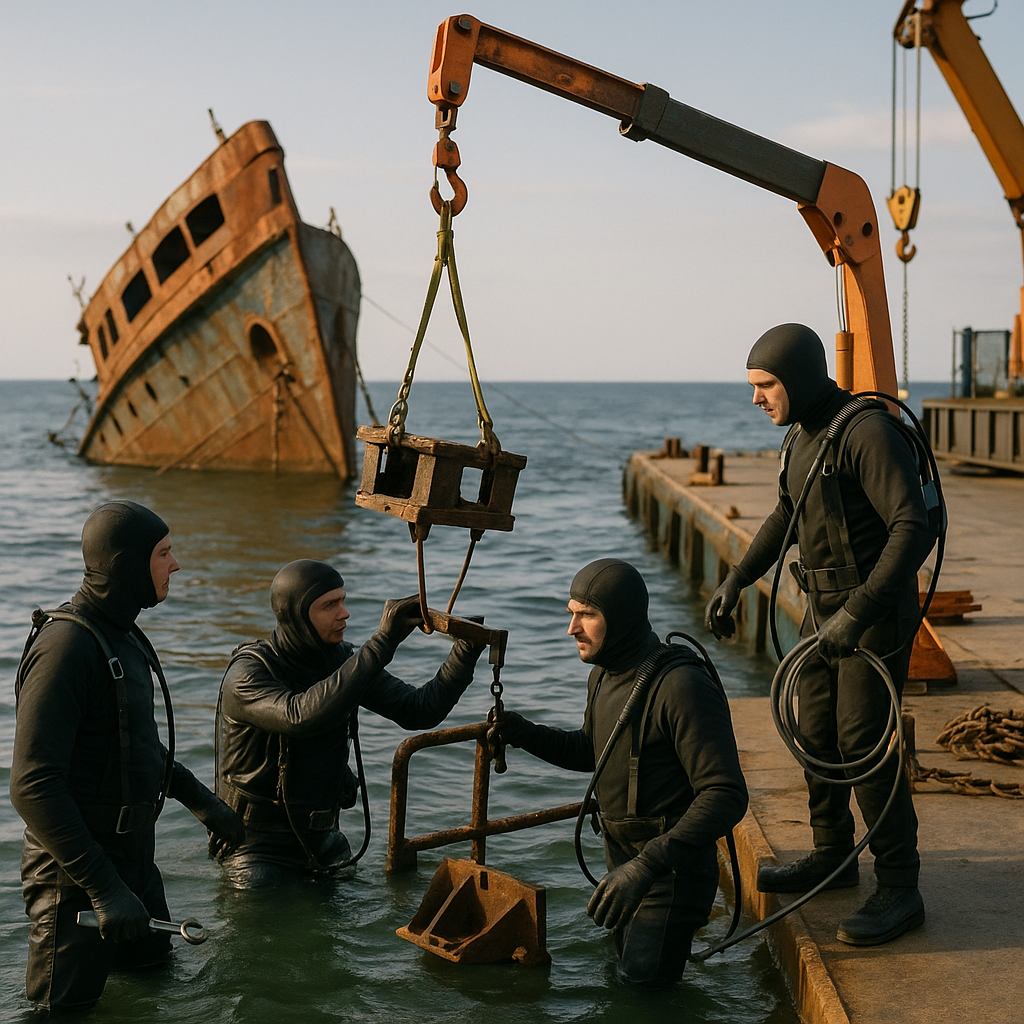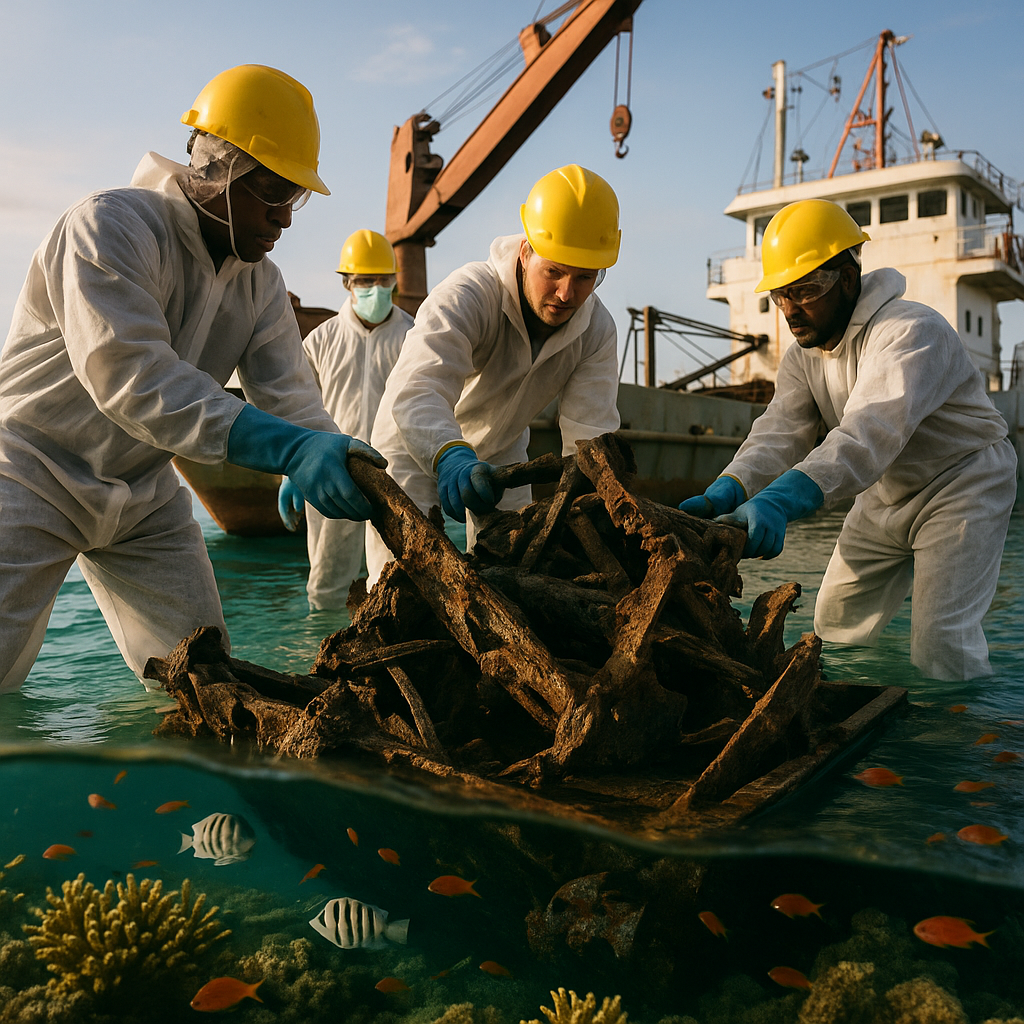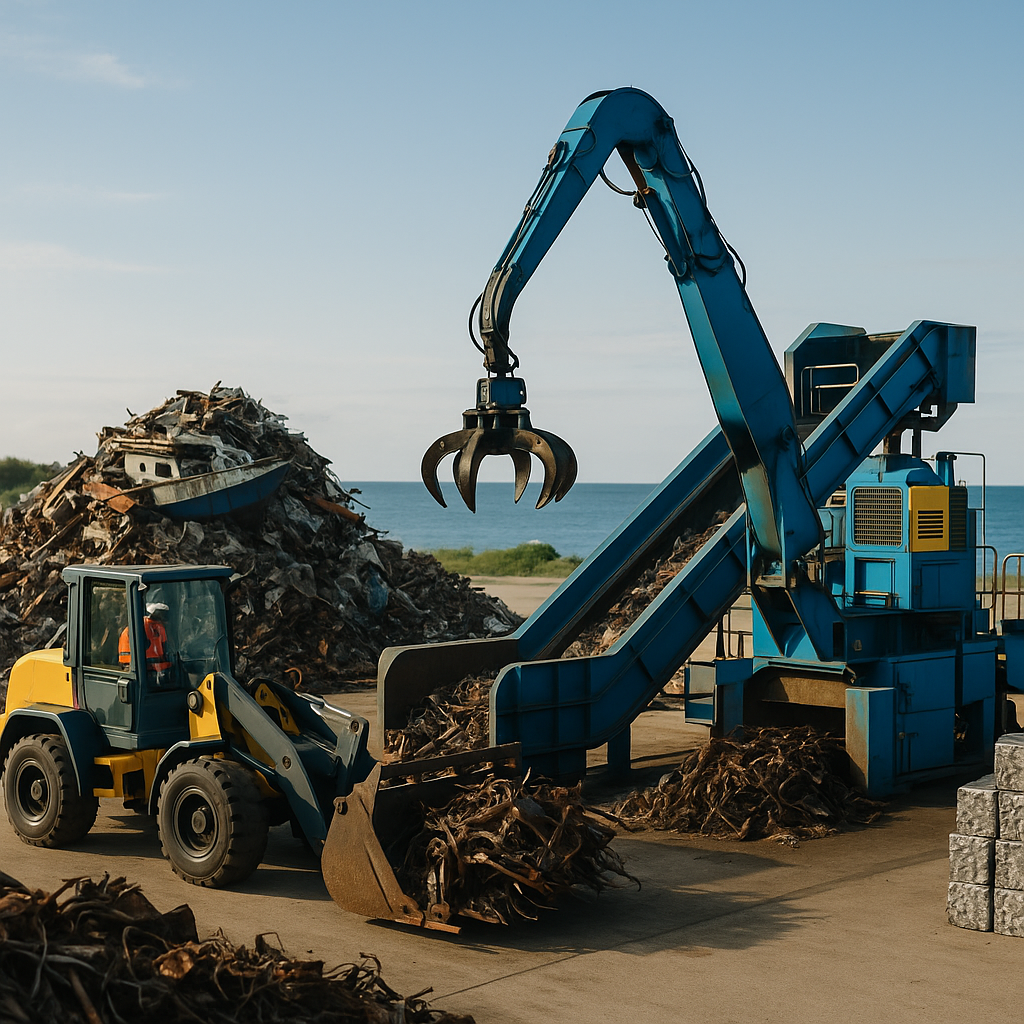5901 Botham Jean Blvd, Dallas, TX 75215
Marine Scrap Metal Recycling: Everything You Need to Know
October 26, 2025The marine scrap metal recycling industry became a significant economic activity after World War II. This process, known as ship breaking or marine salvage, transforms decommissioned vessels into valuable recyclable resources. The practice has evolved from simple dismantling to a sophisticated recycling operation with global environmental implications.
Marine salvage involves the careful deconstruction of ships that have reached the end of their operational life. Most vessels undergo this recycling process after completing their 25-30 year service lifespan. Once decommissioned, these ships contain substantial amounts of recyclable materials waiting to be recovered and reintroduced into the supply chain.
The process primarily focuses on recovering ferrous metals like steel, which constitutes the majority of a ship’s structure. Non-ferrous metals such as copper and aluminum are also salvaged from various components. This systematic dismantling preserves these valuable materials rather than allowing them to become waste in our oceans.
How Does the Marine Salvage Process Work?

The marine salvage process involves several precise steps to recover and recycle valuable metals from end-of-life vessels. This systematic approach ensures maximum resource recovery while maintaining environmental safety standards.
When a ship reaches the end of its operational life, specialized salvage teams first conduct a thorough assessment. They identify all recyclable components and potentially hazardous materials requiring careful handling. This initial survey helps create a detailed salvage plan tailored to each vessel’s unique structure.
Once the vessel is secured, salvage experts begin dismantling using advanced technology. Steel plates are carefully cut with high-powered torches, and large sections are removed with cranes. Experts grade each scrap metal piece according to its quality, composition, and potential reuse value.
The salvage process yields two main categories of recyclable metals:
Ferrous metals make up most recovered materials, primarily steel from the ship’s hull, decking, and structural components. These materials represent about 85% of a vessel’s recyclable content. The steel undergoes sorting based on thickness, alloy composition, and quality before being processed for reuse.
The salvage teams also recover valuable non-ferrous metals such as copper from wiring and electrical systems, aluminum from various fixtures, and brass from plumbing components. Despite being in smaller quantities, these metals often have a higher per-ton value than ferrous metals.
Specialized recycling companies employ careful handling techniques throughout the process to ensure metal isn’t contaminated during cutting and storage, which could compromise its integrity. Proper sorting is critical since mixing different metal types can reduce the quality of the recycled product.
Modern recycling facilities process these recovered metals through several stages. They clean the materials to remove coatings, crush and shred them to uniform sizes, and then melt them down in furnaces. This melting process allows impurities to be removed, resulting in recycled metal that maintains its original strength and durability.
The environmental benefits of this process are substantial. Recycling one ton of steel saves approximately 1.1 tons of iron ore and reduces energy consumption by 16-17% compared to producing new steel from raw materials. This efficiency makes recycled ship metal valuable for manufacturing new products.
The final recycled metal products find new life in various applications. Ship steel often becomes reinforcing bars for construction, parts for new vehicles, or components for industrial machinery. Copper and aluminum are transformed into electrical components, plumbing fixtures, or parts for consumer goods.
Through this careful salvage and recycling process, materials that served for decades at sea gain new purpose on land, extending their usable life while conserving natural resources.
What Are the Environmental Benefits of Marine Scrap Metal Recycling?

Marine scrap metal recycling offers significant environmental benefits that go beyond simply clearing our oceans and waterways. It notably reduces the need for raw material mining, helping to preserve virgin ore deposits that would otherwise be extracted through environmentally harmful mining operations.
The energy efficiency of marine metal recycling is noteworthy. This process uses approximately 70% less energy compared to mining and processing virgin materials, leading to lower CO2 emissions. For example, recycling one ton of steel from marine sources prevents nearly 1.5 tons of carbon dioxide from entering the atmosphere.
Water conservation is another major advantage. Metal mining typically uses large amounts of water, often in areas with existing scarcity issues. Marine scrap recycling requires up to 40% less water than conventional mining and refining, helping to preserve this essential resource as concerns about water security grow worldwide.
Pollution reduction is also significant. Recycling metals from ships and marine equipment, instead of abandoning or improperly disposing of them, prevents toxic substances from contaminating ocean ecosystems. Proper processing prevents harmful chemicals like mercury and lead from damaging marine habitats and entering the food chain.
Furthermore, marine metal recycling aids environmental conservation by reducing landfill use. The Institute of Scrap Recycling Industries reports that metal recycling can cut greenhouse gas emissions by 300 to 500 million tons annually. Diverting marine metals from waste streams minimizes landfill space needs while protecting surrounding soil and groundwater from contamination.
The benefits to the circular economy are also considerable. Recycled marine metals can be reprocessed into new products without any loss of quality, unlike many other materials. This closed-loop system keeps valuable resources in continuous use, reducing the environmental impact of manufacturing across various industries.
Conclusion: The Future of Marine Scrap Metal Recycling

The marine scrap metal recycling industry is at a crucial stage in its development. As global shipping fleets age and environmental regulations become stricter, the volume of vessels needing responsible recycling is anticipated to rise significantly. This growth presents both opportunities and challenges, with sustainability becoming central to future practices.
Technological innovations are reshaping how marine vessels are dismantled and processed. Advanced wire-saw technologies now allow for more precise and safer ship cutting, significantly reducing environmental risks and improving material recovery rates. These advancements, along with enhanced waste management systems and stricter compliance protocols, are establishing new global standards for the industry.
The economic and environmental benefits of marine scrap metal recycling are substantial. By recovering valuable materials from end-of-life vessels, the industry conserves natural resources, reduces energy consumption, and lowers the carbon footprint associated with new steel production. This circular economy approach is increasingly important in our resource-constrained world.
For reliable and environmentally responsible recycling solutions for your maritime assets, Okon Recycling at 214-717-4083 is ready to meet your recycling needs.
